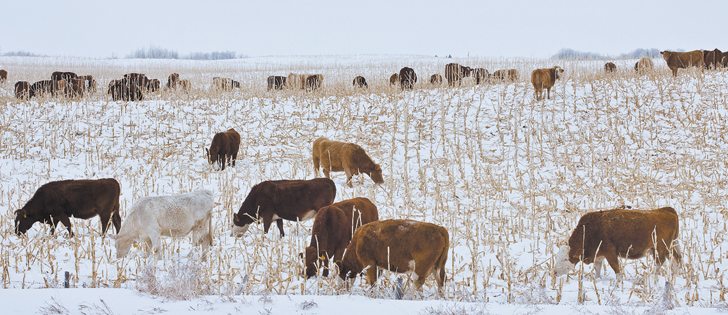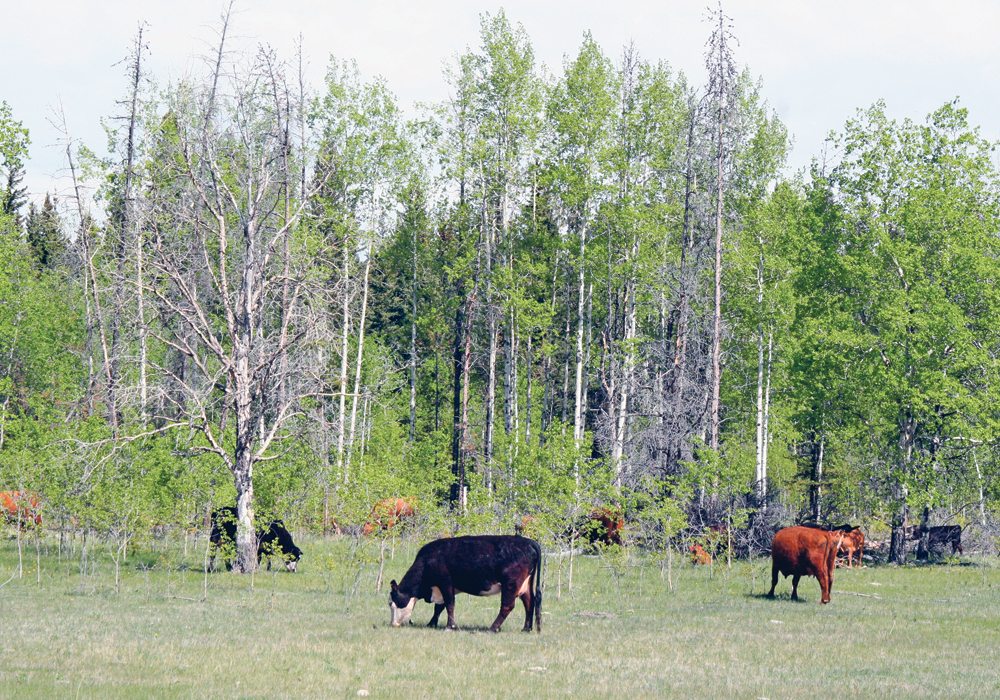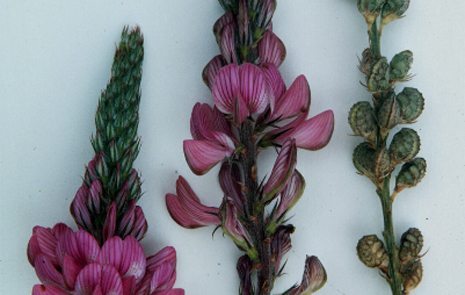Dangerous levels of mycotoxins have been found in standing corn in eastern Alberta and western Saskatchewan.
If cattle eat stalks and leaves but refuse to eat the cobs when grazing, that is a red flag something is wrong, said forage specialist Barry Yaremcio of Alberta Agriculture.
“That is completely backwards. The first thing you see is they go after the cobs first thing before they attack the leaves or the stalks,” he said.
“The stocks are basically no better quality than straw, so the cows have to have the cobs to maintain a plane of nutrition to have good body weight and maintain health and condition.”
Read Also

Beef check-off collection system aligns across the country
A single and aligned check-off collection system based on where producers live makes the system equal said Chad Ross, Saskatchewan Cattle Association chair.
Producers need to check the cobs by stripping back the husks and get the crop tested at an accredited laboratory such as the Prairie Diagnostic Centre in Sask-atoon if blue, green, red or pink mould is present.
Since October, the centre has been inundated with corn samples containing significant levels of mycotoxins known as HT-2 and T-2 toxin from fusarium infected crops.
This problem has not appeared in Western Canada before, and it is not the same as what has been experienced in the United States, said toxicologist Barry Blakley of the University of Saskatchewan.
“About 70 percent of the samples we get containing mycotoxins are of clinically relevant levels,” he said.
Growth conditions affected the crop this year because of a wet fall that was followed by warmer than normal temperatures in October and November.
“That temperature was optimal for the fusarium to produce these two toxins,” he said.
“They are in the same group as vomitoxin, but they are way more potent.”
Cattle refuse to eat it, lose weight, can become immuno-suppressed and can abort calves.
Many producers planted corn in recent years because it was free of ergot.
“Corn is susceptible to ergot, but it is susceptible to fusarium mycotoxin. The ones we are seeing in the corn are consistently HT-2 and T-2,” he said.
There are also reports of these toxins appearing in corn silage or in abandoned swaths that could not be harvested this fall.
Swath grazing programs seem to be safe right now.
People have been providing supplemental feed, but good quality product isn’t plentiful.
“It has been a lose-lose for a number of people,” he said.
“It is because of the strange weather in October and November where it was wet and warmer than normal.”
Samples sent to the diagnostic centre should include a request to test for mycotoxins rather than mould.
The amount of mould is not an indicator of the presence of myco-toxins.
“Some are really rotten and there’s no mycotoxins, while others are mildly rotten and there’s loads of mycotoxins,” Blakley said.
Producers are advised to collect about 10 corn stalks from a field, cut them off at about six to eight centimetres from the ground, mix them together and chop them up. About a half a kilogram or a half a bread bag is enough for testing purposes.
Crop rotations with pulses, alfalfa or canola may minimize the spread of fusarium or ergot.
Blakley said this might not be a problem next year if weather conditions are different, but it is known that fusarium is spreading across the West.
“Western Canada has not had this problem up until recently,” he said.
“In Europe and United States, this is a fact of life, and now we are part of it.”


















